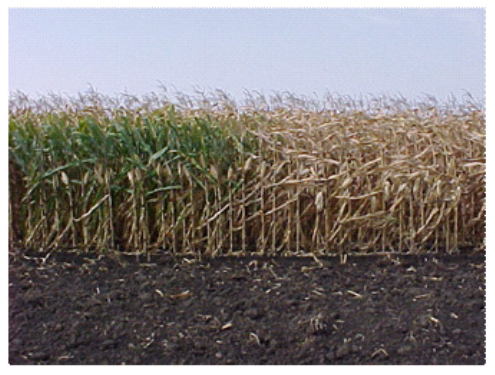
High glycemic index foods such as potatoes, by themselves, don’t promote insulin resistance. Potatoes as part of a high-fat, high-calorie diet do.
There’s a study being passed around on the media that links a high glycemic index (GI) diet to an increase in lung cancer risk. Here’s the study:
Glycemic Index, Glycemic Load, and Lung Cancer Risk in Non-Hispanic Whites, Cancer Epidemiology, Biomarkers and Prevention, March 2016
The mechanism they give is that eating high GI foods (which are carbs that are easily and quickly digested such as potatoes), causes an increase in blood insulin and other growth factors (insulin is a growth-promoting hormone). Those growth factors can promote cancer:
Diets high in GI result in higher levels of blood glucose and insulin, which promote glucose intolerance, insulin resistance, and hyperinsulinemia. Insulin resistance is a pathologic condition, and previous studies suggest that insulin resistance is associated with abnormally high levels of growth factors, adipokines, reactive oxygen species, adhesion factors, and proinflammatory cytokines, all of which have been associated with neoplastic tissue survival and cancer stem cell development. Circulating levels of insulin have also been associated with a variety of different cancers and may modulate cancer risk via perturbations in the IGF axis.
It’s true that if you have insulin resistance, you will have higher insulin levels (as long as your pancreas is working well). And it’s true that insulin and other growth factors can promote cancer. (IGF-1 in dairy food is a growth factor thought to promote cancer.)
It’s not true that eating carbohydrates, even refined carbs such as you find in potatoes and bread, causes or “promotes” insulin resistance and high insulin. (If it was true, then Cubans who consumed a very high-GI diet, mostly sugar and rice, during their Special Period would have had more insulin resistance, more diabetes, and more cancer if you apply this study. In fact, they had lower rates of diabetes and cancer.) Dietary fat promotes insulin resistance. If you eat a lot of fat and eat high-GI carbs on top of it, yes, you will end up with high blood glucose and high insulin. Potatoes alone won’t cause it. You have to look at the whole diet, not a particular nutrient in isolation.
How much fat were the people who ate high-GI carbs, and who had lung cancer, eating? We don’t know because the researchers didn’t measure it directly. At least they didn’t include it in the published analysis. Consequently, they didn’t adjust for it, as far as I can tell.
This is informative:
Cases were more likely to smoke, be heavier smokers, and had lower BMI, physical activity levels, and years of education. Cases had … lower total carbohydrate intake grams per day, and lower fiber intake.
Those who had cancer ate lower-carb, lower-fiber diets. If you eat less carbohydrate, by default you eat more fat and protein. (Fat and protein become a larger percentage of the calories you eat in a day.) What foods are higher in fat and protein? While also being low in fiber? (Fiber is only found in plant food.) You know the answer to that … animal foods. (It did say cases and controls were eating about the same amount of meat, so this could point to dairy food.)
From that CNN article I linked above:
Previous research* has linked a number of other foods, such as red meat and dairy products, with higher rates of lung cancer, while consumption of fruits and vegetables has been associated with lower rates.
* Lung Cancer: Epidemiology, Etiology, and Prevention, Clinics in Chest Medicine, December 2011
Certain dietary items, including red meat, dairy products, saturated fats, and lipids, have been suggested as increasing the risk for lung cancer.151–154 Other foods found to have an adverse effect on lung cancer include items that contain nitrosodimethylamines and nitrites, such as those found in salami and salted and smoked meat products.155,156
Overall, it has been shown that low or no intake of fruits or vegetables has been associated with up to 3-fold risk for lung cancer.
The people in this study who had lung cancer were eating a diet that was lower in total carbohydrates (perhaps lower in fruits and vegetables which are primarily carbohydrates), lower in fiber, and higher in fat and protein, e.g dairy food, than people who didn’t have lung cancer. Any or all of these dietary factors could have contributed to their cancer.









